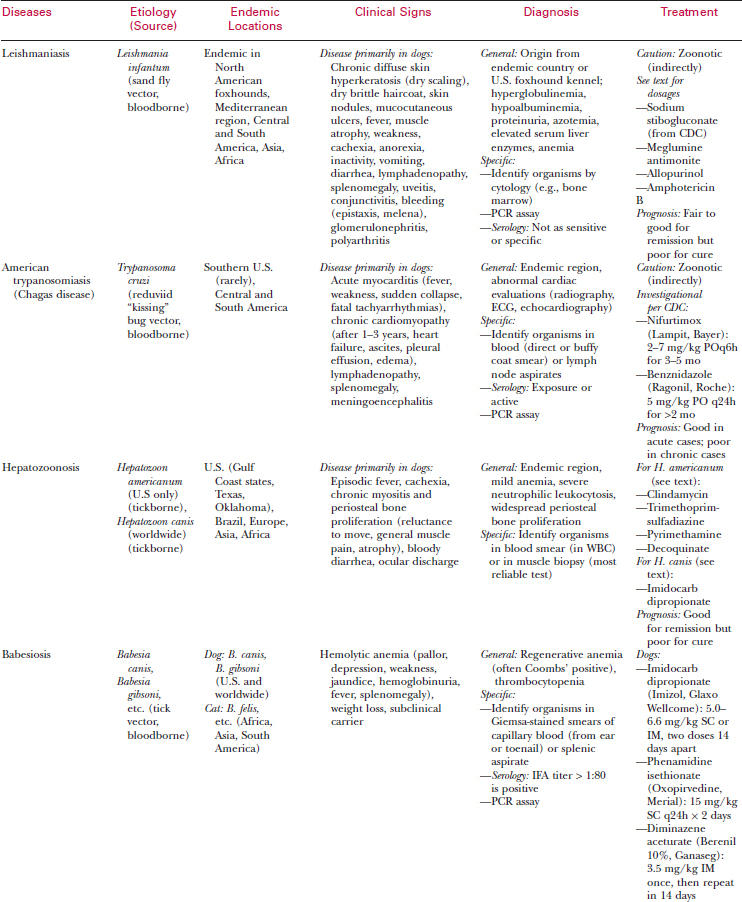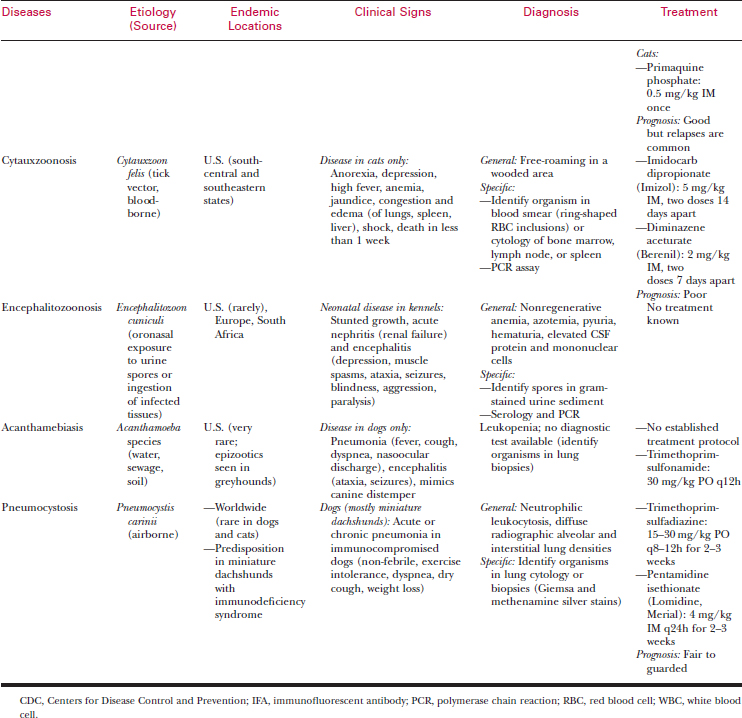Chapter 21 Toxoplasmosis and Other Systemic Protozoal Infections
The protozoa that infect dogs and cats can be classified broadly into those that disseminate and cause systemic disease and those that primarily live in the intestinal tract. This chapter describes toxoplasmosis, the most important systemic protozoal infectious disease in North America, and other emerging systemic protozoal infections—neosporosis, hepatozoonosis, and leishmaniasis. These and other systemic protozoal infections are summarized in Table 21-1, including trypanosomiasis, babesiosis, cytauxzoonosis, encephalitozoonosis, acanthamebiasis, and pneumocystosis.
Protozoa that parasitize erythrocytes, such as Babesia spp. and Cytauxzoon felis, are discussed in Chapter 22. Enteric protozoal infections (coccidiosis, giardiasis, tritrichomoniasis, amebiasis, and balantidiasis) are discussed in Chapter 69.
TOXOPLASMOSIS
Etiology
Routes of Transmission
Ingestion of Tissue Cysts
Ingestion of Fecal Oocysts
Stages of Infection
Intestinal Replication and Oocyst Shedding
Dissemination and Intracellular Replication
Chronic Tissue Encystment
Clinical Signs
Ocular Signs
Ocular toxoplasmosis (uveitis) is one of the most common forms of the disease. Blindness may result.
Respiratory Signs
Acute necrotizing interstitial and alveolar pneumonia is common and can cause progressive dyspnea.
Neuromuscular Signs
Hepatic and Digestive Tract Signs
Laboratory and Radiographic Findings
Abnormalities found on routine diagnostics are varied and nonspecific.
Hematology and Serum Chemistries
Radiography
Diagnosis
Serology
Immunoglobulin M Antibody Titer
Immunoglobulin G Antibody Titer
Stay updated, free articles. Join our Telegram channel

Full access? Get Clinical Tree




